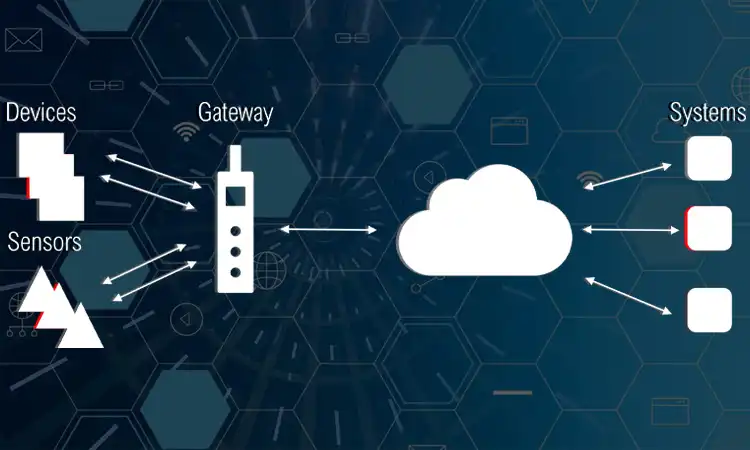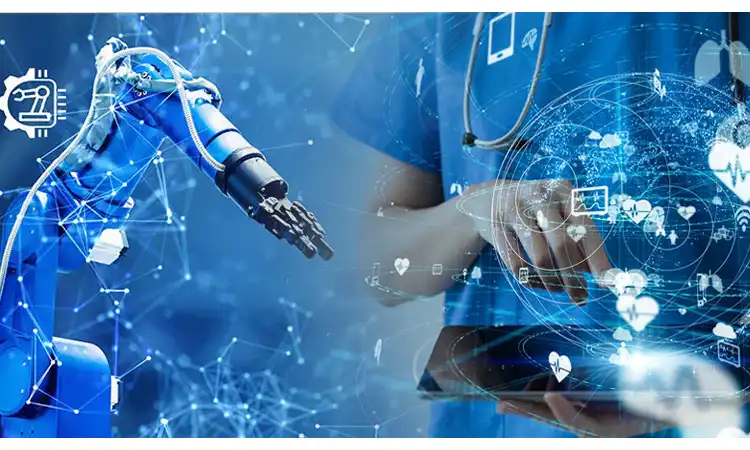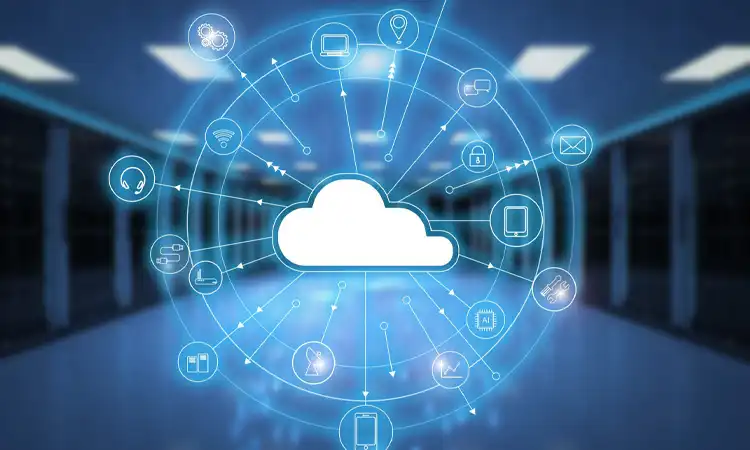IoT (Internet of Things) is rapidly changing the way we interact with the world around us. IoT infrastructure plays a critical role in enabling this transformation by providing the necessary hardware, software, and connectivity for devices to communicate with each other and process data. In this article, we will explore the basics of IoT infrastructure, its components, architecture, security measures, applications, and future developments.
Components of IoT Infrastructure

The IoT infrastructure comprises several components that work together to enable devices to communicate with each other, process data, and perform various functions. These components include devices, connectivity, and data processing.
Devices
Devices are essential to IoT infrastructure, including sensors, actuators, and intelligent devices. These devices collect and transmit data to the cloud or other data processing centers.
- Sensors: Sensors are devices that detect and measure changes in the environment. They can detect anything from temperature, humidity, light, and sound to motion, pressure, and more. Sensors are usually small and can be embedded in various objects and devices.
- Actuators: Actuators are devices that can be controlled to perform specific actions based on the data collected by sensors. Examples of actuators include motors, valves, and switches. Actuators can turn on or off devices or perform other actions based on the collected data.
- Smart Devices: Smart devices are devices that can connect to the internet and can process data. These devices include smartphones, tablets, smartwatches, and smart TVs. They can interact with other IoT devices, process data, and display the results.
Connectivity
Connectivity is another critical component of IoT infrastructure. Devices must be connected to the internet to send data to the cloud or other data processing centers. Several connectivity options are available for IoT devices, including Wi-Fi, Bluetooth, and cellular connectivity.
- Wi-Fi: Wi-Fi is a popular wireless connectivity option. It enables devices to connect to the internet within the range of a wireless access point. Wi-Fi is suitable for devices that are close to each other.
- Bluetooth: Bluetooth is a wireless technology that enables devices to connect directly. Bluetooth is ideal for devices close to each other, and it’s commonly used in smart home devices.
- Cellular: Cellular connectivity uses cellular networks to enable devices to connect to the internet. Cellular connectivity is ideal for devices that are located remotely and need to connect to the internet.
Data Processing
Data processing is the third critical component of IoT infrastructure. IoT devices generate a large amount of data that needs to be processed and analyzed to extract meaningful insights. Two main data processing options for IoT infrastructure are cloud computing and edge computing.
- Cloud Computing: Cloud computing involves processing and analyzing data on remote servers that are located in data centers. Cloud computing enables devices to send data to the cloud for processing and analysis. Cloud computing is ideal for large-scale data processing and analytics.
- Edge Computing: It involves processing and analyzing data locally on IoT devices or other local servers. It is suitable for real-time data processing and analysis and can reduce latency and bandwidth requirements.
The components of IoT infrastructure work together to enable devices to communicate with each other and process data. These components include devices, connectivity, and data processing. Understanding the different components of IoT infrastructure is essential for building and deploying IoT systems that are scalable, secure, and efficient.
IoT architecture
The IoT architecture is the framework that defines the structure and components of an IoT system. The architecture determines how devices, connectivity, and data processing components work together to enable IoT systems to function. There are two main types of IoT architecture: three-tier and five-tier architecture.
Three-Tier Architecture
The three-tier architecture, also known as the IoT reference architecture, is the traditional IoT architecture model. It consists of three layers: the perception tier, network tier, and application tier.
- Perception Tier: The perception tier is the lowest layer of the architecture, and it includes all the devices that collect data from the environment. These devices are usually sensors and actuators. The perception tier handles sensing the environment and collecting data from various sources.
- Network Tier: It is the middle layer of the architecture, and it includes the gateways and communication protocols that connect the perception tier to the application tier. The network tier handles transmitting the collected data to the application tier for processing and analysis.
- Application Tier: It is the highest layer of the architecture, and it includes the cloud and data processing centers that perform data processing and analysis. The application tier handles analyzing the collected data and generating insights that can be used to improve the performance of the IoT system.
Five-Tier Architecture
The five-tier architecture, also known as the IoT extended architecture, is an expansion of the three-tier architecture. It includes two additional layers: the device tier and the platform tier. The five-tier architecture provides a more comprehensive framework for building complex IoT systems.
- Device Tier: The device tier is the lowest layer of the architecture, and it includes all the physical devices that collect and transmit data to the network tier. The device tier includes sensors, actuators, and other IoT devices.
- Gateway Tier: The gateway tier is the second layer of the architecture, and it includes the devices that act as intermediaries between the device tier and the network tier. Gateways are responsible for aggregating the data from the device tier and transmitting it to the network tier.
- Network Tier: The network tier is the third layer of the architecture, and it includes the communication protocols and gateways that connect the devices to the platform tier. The network tier handles transmitting the collected data to the platform tier for processing and analysis.
- Platform Tier: The platform tier is the fourth layer of the architecture, and it includes the cloud and data processing centers that perform data processing and analysis. The platform tier handles analyzing the collected data and generating insights that can be used to improve the performance of the IoT system.
- Application Tier: The application tier is the highest layer of the architecture, and it includes the applications and interfaces that enable users to interact with the IoT system. The application tier is responsible for displaying the results of the data analysis and allowing the users to control the IoT devices.
IoT architecture is a critical component of IoT infrastructure that defines the structure and components of an IoT system. The two main types of IoT architecture are the three-tier architecture and the five-tier architecture. Understanding the IoT architecture is essential for building and deploying IoT systems that are scalable, secure, and efficient.
Security in IoT Infrastructure
Security is a critical concern in IoT infrastructure as IoT devices and systems are susceptible to cyber-attacks. IoT security is the measures to protect IoT devices and systems from malicious attacks and unauthorized access.
Device Security
IoT devices are the primary target for cyber attacks, and it is essential to ensure their security. Device security involves implementing secure boot and firmware updates, using encrypted communication protocols, and implementing access control mechanisms. It is also essential to have physical security measures to prevent unauthorized access to devices.
Network Security
Network security involves securing the communication channels between IoT devices, gateways, and cloud servers. This can be achieved by implementing secure communication protocols such as Transport Layer Security (TLS) and Secure Shell (SSH). It is also important to use firewalls and intrusion detection systems to prevent unauthorized access to the network.
Data Security
IoT systems generate a massive amount of data, which is crucial to security. This involves implementing encryption mechanisms to protect data in transit and at rest. Access control mechanisms should be implemented to ensure that only authorized personnel can access the data. It is also essential to have data backup and recovery mechanisms to prevent data loss due to cyber-attacks.
Cloud Security
Cloud computing is an essential component of IoT infrastructure and crucial to securing cloud servers. Cloud security involves:
- Securing access to the cloud server.
- Implementing encryption mechanisms for data in transit and at rest.
- Implementing access control mechanisms.
It is also essential to have backup and disaster recovery mechanisms to prevent data loss due to cyber-attacks.
Application Security
Application security involves securing the software and applications used in IoT systems. Implementing secure coding practices and using secure software development methodologies is essential. Access control mechanisms should be implemented to ensure that only authorized personnel can access the applications. It is also essential to perform regular security audits and vulnerability assessments to identify and address security weaknesses.
Physical Security
Physical security is also an essential aspect of IoT infrastructure security. Physical security measures include:
- Securing access to IoT devices.
- Using tamper-resistant hardware.
- Implementing mechanisms to prevent unauthorized physical access.
Security is a critical concern in IoT infrastructure, and it is essential to implement measures to ensure the security of IoT devices, networks, data, cloud servers, applications, and physical infrastructure. Implementing IoT security best practices such as secure boot, encrypted communication protocols, access control mechanisms, and physical security measures can help protect IoT systems from cyber-attacks and unauthorized access. Regular security audits and vulnerability assessments can help identify and address security weaknesses in IoT infrastructure. By implementing these security measures, IoT infrastructure can be made more secure, reliable, and trustworthy, making it more useful for various industries and applications.
Applications of IoT Infrastructure

The IoT infrastructure has various applications across different industries, from healthcare to transportation to manufacturing.
Smart Homes
Smart homes use IoT infrastructure to automate and control various devices and appliances. IoT sensors and devices are integrated into home systems to provide convenience, safety, and energy efficiency. For instance, homeowners can remotely control their homes’ lighting, temperature, and security systems using their smartphones or other devices.
Healthcare
IoT infrastructure is used in healthcare to improve patient outcomes, provide remote monitoring, and enhance healthcare delivery. Wearable devices like fitness trackers are used to monitor vital signs and collect health data. This data is then transmitted to healthcare providers who can monitor patient health remotely and provide timely interventions when necessary.
Smart Cities
IoT infrastructure is used in smart cities to manage various systems, including transportation, energy, and waste management. IoT sensors and devices are used to monitor traffic flow, parking, and energy consumption, among other things. This data is used to optimize city operations and improve the quality of life for residents.
- Manufacturing: IoT infrastructure is used in manufacturing to improve efficiency, reduce downtime, and optimize supply chains. IoT sensors and devices are used to monitor equipment performance, identify potential maintenance issues, and track inventory levels. This data is used to improve manufacturing processes and reduce waste.
- Agriculture: IoT infrastructure monitors crops, optimizes water usage, and improves yields. IoT sensors and devices monitor soil moisture, temperature, and other environmental factors. This data is used to optimize irrigation schedules and improve crop yields.
- Energy: IoT infrastructure is used in the energy industry to monitor and control energy usage and improve energy efficiency. IoT sensors and devices monitor energy consumption, identify waste, and optimize energy usage. This data is used to improve energy efficiency and reduce costs.
- Transportation: IoT infrastructure optimizes routes, improves safety, and reduces fuel consumption. IoT sensors and devices monitor traffic flow, vehicle performance, and driver behavior. This data is used to optimize transportation routes and improve safety and fuel efficiency.
The Internet of Things infrastructure has many applications across different industries, including healthcare, smart homes, smart cities, manufacturing, agriculture, energy, and transportation. IoT infrastructure is used to automate and control various devices and appliances, provide remote monitoring, and improve efficiency, safety, and energy efficiency. IoT sensors and devices are integrated into different systems to collect data and provide insights that can be used to optimize operations, reduce waste, and improve outcomes. As IoT technology continues to evolve and mature, we can expect to see even more innovative and exciting applications of IoT infrastructure in the future.
Future of IoT Infrastructure
IoT infrastructure has seen rapid growth and adoption over the past few years, and its future looks promising. As the number of IoT devices continues to increase, we can expect to see more innovative and exciting applications of IoT technology in the future.
IoT Infrastructure Edge Computing
Edge computing is a technology that allows data to be processed closer to the source of the data rather than sending it to a centralized cloud server for processing. This technology is becoming increasingly important in the IoT infrastructure, allowing devices to process and analyze data in real time without needing a high-bandwidth network connection. With the rise of edge computing, we can expect to see more intelligent and autonomous IoT devices that can operate independently without relying on a cloud server.
5G Networks
5G networks are the next generation of wireless networks, offering faster speeds, lower latency, and higher bandwidth than previous generations. This technology is expected to transform the IoT infrastructure, enabling more connected devices and applications that require real-time data processing and analysis. With the rise of 5G networks, we can expect to see more advanced IoT applications, such as self-driving cars and smart cities, that require fast and reliable data transfer.
Artificial Intelligence (AI)
Artificial intelligence is a technology that allows machines to learn and adapt to new situations, improving their performance over time. AI is becoming increasingly important in the IoT infrastructure, allowing devices to make intelligent decisions and automate processes. With the integration of AI into the IoT infrastructure, we can expect to see more intelligent and autonomous devices that can operate with minimal human intervention.
Blockchain Technology
Blockchain is a distributed ledger technology that allows for secure and transparent transactions without a centralized authority. This technology is becoming increasingly important in the IoT infrastructure, as it allows for secure and trustworthy data exchange between devices. With the integration of blockchain technology into the IoT infrastructure, we can expect to see more secure and transparent data exchange between devices, reducing the risk of data breaches and cyber-attacks.
Sustainability
As the world becomes more aware of the impact of human activities on the environment, sustainability is becoming increasingly important in developing new technologies. The IoT infrastructure is no exception, with many companies focusing on developing sustainable IoT devices and applications that are environmentally friendly. With a focus on sustainability, we can expect to see more IoT devices and applications that are energy-efficient, use renewable energy sources, and reduce waste.
The future of IoT infrastructure looks promising, with the rise of edge computing, 5G networks, AI, blockchain technology, and sustainability shaping the development of new IoT devices and applications. As the number of connected devices continues to increase, we can expect to see more innovative and exciting applications of IoT technology in the future, improving how we live and work. However, with the rise of new technologies also come new challenges, such as data privacy and security concerns, that must be addressed to ensure a safe and secure IoT infrastructure.
The IoT infrastructure is a rapidly evolving technology transforming how we interact with the world around us. By understanding IoT technology’s components, architecture, security, applications, and future developments, we can harness its potential to create a more connected, intelligent, and sustainable future.









